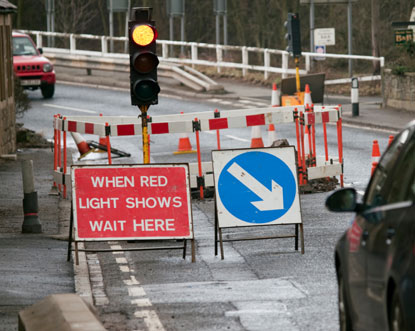By Mandy Bretherton | 12 February 2014
The nation's biggest asset is transport infrastructure, but local highways may be undervalued by £200bn. Now accountants and engineers can agree a figure

Transport networks are vital to our national economic prosperity. Highways and other local transport infrastructure together represent by far the biggest capital asset that the UK public sector holds. But they may collectively be undervalued by at least £200bn.
The aim of CIPFA's updated Code of Practice on Transport Infrastructure Assets (known as the Code) is that each authority should develop a single set of financial management information that is robust and consistent between authorities and can be used for asset management, financial management and financial reporting.
The Code provides the methodology to value infrastructure assets using depreciated replacement cost. Since its initial publication in 2010 it has been used to provide information for the Whole of Government Accounts and to support asset management.
The Department for Transport's recent statement that it intends to review how funding for highways maintenance is allocated to local authorities over the next spending review period (from 2015/16) has given renewed impetus to improving the quality of data on these assets. One proposal that it will be consulting on in the near future is how it can reward those authorities that have taken up good asset management practices and achieved efficiencies.
CIPFA/LASAAC also sees the benefits and importance of this asset management–based approach to valuation, which better reflects the true value of the assets when compared to the current historical cost approach. After the consultation it is likely that local authorities will be required to value their infrastructure assets in their Statement of Accounts in accordance with the Code from 2016/17 with 2015/16 being a preparatory year. More details will be provided in the 2014/15 Code of Practice on Local Authority Accounting in the United Kingdom.
So what does this mean in practice for local authorities? The actual accounting entries will not differ from those already required for other assets. But there will be significant impacts on the accounts, both on the balance sheet in terms of the big increase in the assets’ value, and also in terms of the more realistic levels of depreciation charged to the income and expenditure statement which will better reflect the consumption of the assets.
To ensure that these values are robust it will be necessary for the accountants to work closely with the engineers. Among the key areas to discuss will be inventory requirements, components and record keeping. Accountants will be able to draw upon their experience of implementing International Financial Reporting Standards, with many of the issues being similar to those already resolved for property assets.
However, they will need to be sympathetic where engineers’ requirements differ. For example, an engineer may seek more detailed component information for asset management purposes than the accountants may need to satisfy the componentisation requirements of the accounting standard IAS16. This may mean that the level of detail held for the engineers' purposes is summarised to a higher level for the accountants, adding to the potential complexity.
Another key area requiring close working between the accountants and engineers will be to identify the reasons for movements in values between years. Once again, the accountants will be able draw upon their experiences for other categories of asset to help the engineers, but both will need to work together to ensure clarity.
Careful planning will be essential to the success of this change. CIPFA will be supporting this process and plans to produce practical project management guidance for local authorities and also provide support on the requirements through its Finance Advisory Network and Highways Asset Management Planning Network. Although there is a fair way still to go, we believe the prize of having good information for planning and management of the nation’s biggest asset will definitely be worthwhile.
Mandy Bretherton is CIPFA's technical manager
This opinion piece was first published in the January/February edition of Public Finance magazine



















